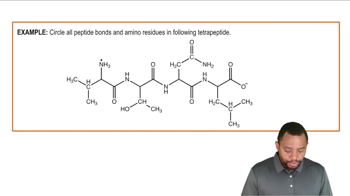Classify each of the following amines as primary (1°), secondary (2°), or tertiary (3°):
d.
 Verified step by step guidance
Verified step by step guidance Verified video answer for a similar problem:
Verified video answer for a similar problem:



 1:26m
1:26mMaster Amine Classification Concept 1 with a bite sized video explanation from Jules
Start learning